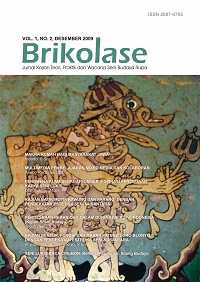Kajian Batik Motif Kawung Dan Parang Dengan Pendekatan Estetika Seni Nusantara
DOI:
https://doi.org/10.33153/bri.v1i2.261Abstract
Art is not only related to aesthetics, but also associated with non-symbolic or symbolic meanings, the symbolic meaning of the classical era is often used to signify rank or degree, for example in Batik, Batik patterned particularly Kawung. When viewed from the evidence of its history it can be seen the development of batik was there when the temples are made, even though no physical evidence of the existence of a piece of batik cloth but can be seen from the depiction of figures in the form of statues are in the use of batik cloth.
In the group of geometric decoration, the familiar motif Batik old (ancient) Kawung criteria that goes into the motives Ceplok2, and more specifically into the Outback or Kraton Batik motifs (Based on Hinduism traditions), and the motive is one of the members of prohibition in the 7 (seven) other restrictions such as motive Parang, Parang Rusak, Cemukiran, Sawat, Udan lyrical, Cement, and Alas-alasan.
Above fact is the reason for the authors to examine batik Kawung and parang with nusantara aesthetic approach. Batik kawung because one of the old motifs and motifs machete is one of the motives ban.
Keywords: batik, kawung motive, parang motive, nusantara aesthetics.
Downloads
Downloads
Published
How to Cite
Issue
Section
License
Copyright (c) 2016 Anton Rosanto

This work is licensed under a Creative Commons Attribution 4.0 International License.
Author continues to retain the copyright if the article is published in this journal. The publisher will only need publishing rights



